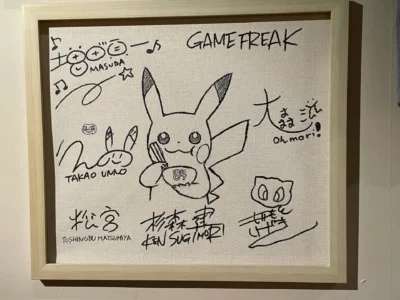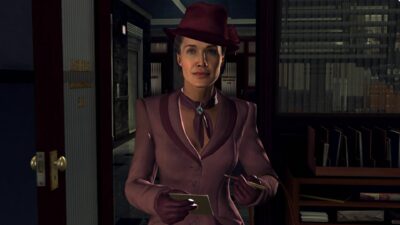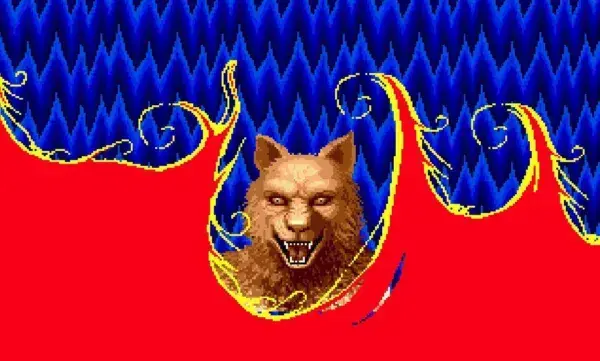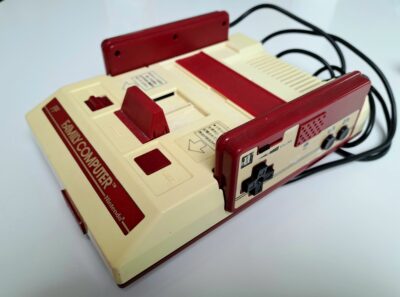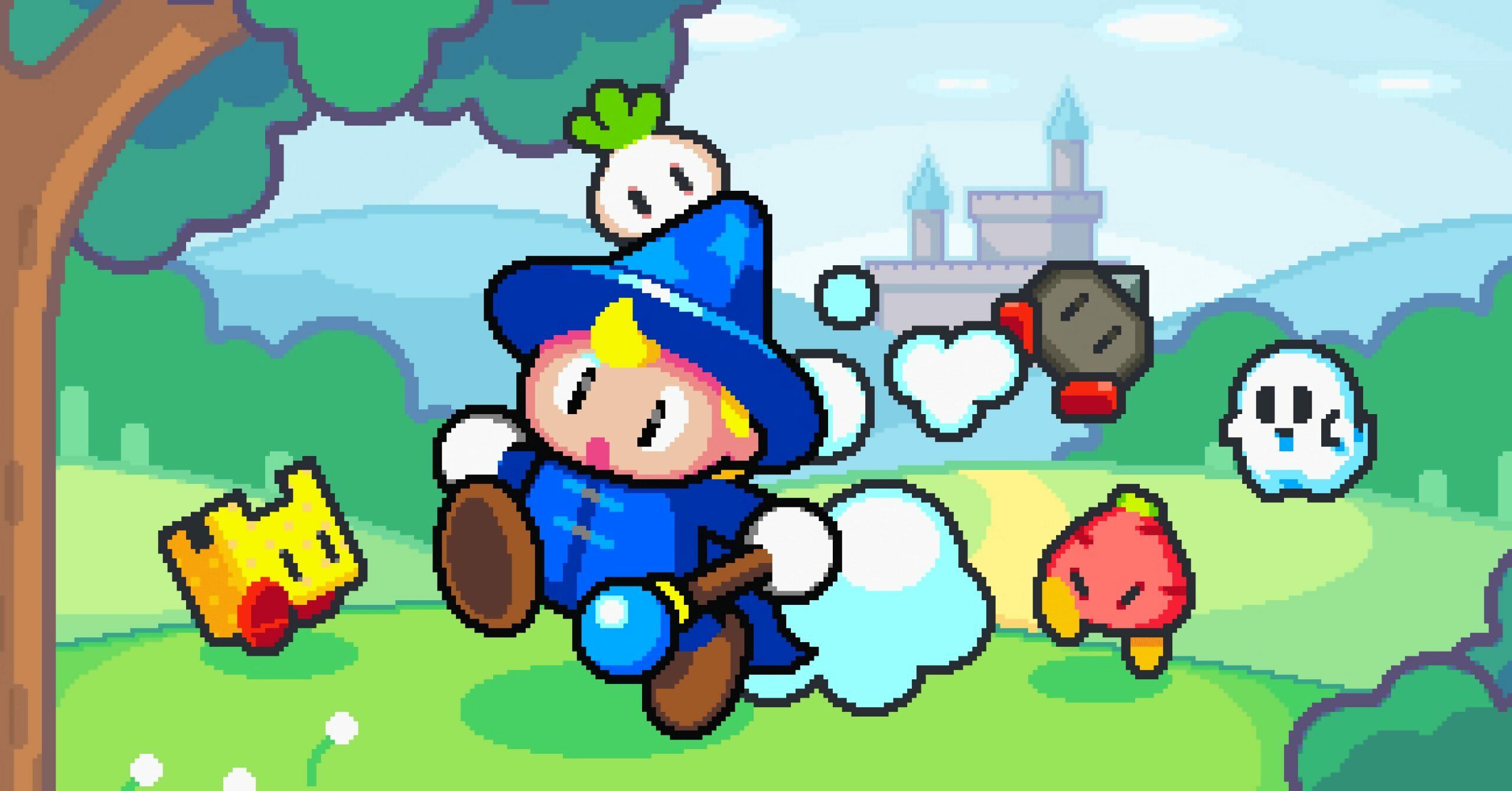
If you’re an aficionado of retro-infused mobile gaming, you’re likely aware of Neutronized. If not, you should be. This tiny one-man studio, founded by Gionathan Pesaresi, is a regular supplier of arcade joy, from Drop Wizard’s frenetic single-screen larks to epic side-scrolling platformer, Super Cat Tales 2. A decade in, we decided to find out what makes Neutronized tick.
Unsurprisingly, given the retro stylings of Neutronized output, old-school gaming is in Pesaresi’s blood. Many of his early memories involve classic DOS titles like Prince of Persia and Lucasfilm graphic adventures – “I loved the humour, and trying to solve a difficult puzzle right before I had to catch the bus to school!” – but also coin-op classics. “I was mesmerised by sprites in games like Street Fighter II,” he says, “and had already started to wonder how to create such animated images.”
Game on
Additional early gaming experiences further informed the young Pesaresi’s subsequent path. With Duke Nukem, he used the Build engine to fashion new level maps. Then a mix of emulation and handhelds opened up a world of Japanese video games. RPGs taught Pesaresi the value of developing a bond with a title’s stories and characters. “But Kirby’s Dream Land 3 had the biggest impact,” he remembers. “It matches what I most love about video games – peaceful environments and relaxing gameplay – and influenced me the most as a creator. It’s the one game I’ll take if I’m to be stranded on a desert island.”
As Pesaresi reminisces about his school days, you feel he was always somehow destined to work on games. “During elementary school, I’d sketch imaginary level maps that my teacher savagely ripped apart because they apparently weren’t part of the lesson,” he jokes. “And I started writing letters to computer magazines, asking how to make games. I quickly got the hint programming was fundamental to that, but I’d no clear concept [of] what programming was! Eventually, I found tools like ‘Klik and Play’, which allowed me to start experimenting with sprites and logic.”
Actual games then followed, Pesaresi sharing them with like-minded classmates who’d constantly challenge each other to do even better. Later, he studied programming, making simple games like Food Maniacs in C++ and SDL. These helped Pesaresi secure a role at Impressionware during his early twenties. “My job was to code J2ME games, and I even got the chance to work on a Nintendo DS devkit,” he recalls, adding that he rapidly learned from experienced programmers that “programming on the battlefield was way better than studying it in books.”

An arcade game on mobile, Drop Wizard mixes up single-screen platforming and auto-running.
Going solo
After some years, the itch to work on his own games returned. Flash was popular at the time, and so Pesaresi made Ghosts Stole My Puppy. This gentle side-scrolling platformer had you take on the role of a low-rent ghostbuster, leaping about a massive house, using a vacuum cleaner to suck up pet-stealing spooks. Released in 2010, under the Neutronized banner, its pixel art and carefully considered, platform-specific control method (mouse to aim/suck; keys to move) hinted at what was to come.
More importantly, it got Neutronized noticed, with a licence sold to gaming portal, Ninja Kiwi. “After this first success, I became self-employed, determined to make a living from my games, and be competitive – in terms of quality and output – with what the likes of Nitrome was doing,” says Pesaresi. Two years later, though, a major change found Neutronized’s attention abruptly shift to mobile. “That happened because I was contacted by publisher FDG Entertainment, who wanted to convert my browser game Roar Rampage to mobile.” It was a timely development: Pesaresi had started to notice the decline in Flash games, and FDG provided insight into how mobile gaming worked. “I learned about App Store reviews, the need to create promotional art in case Apple wanted to feature a game, and key information about ratings and rankings,” he explains.
The move to mobile also aligned with a desire to ramp up the quality level of Neutronized games: Pesaresi decided they must have “more story, more levels, and more secrets.” This dovetailed with his childhood love for arcade and console hits. The ultimate aim was to “come up with a game that could pass for one on classic consoles”, harking back to a creative era primarily driven by “new, original games, rather than sequels and remakes.”
From a visual standpoint, such influences are clear, given that all Neutronized games use pixel art. “Most games I remember playing when younger used pixel art,” says Pesaresi. “It delivers a unique level of precision I love – the way I can control all the pixels on the screen.” But there was never any interest in cloning an existing property – any ‘tributes’ had to build on gaming’s history. “Keeping old classics as reference is a good way to pay respect and ensure their spirit lives on,” he adds. But innovation is something we should all strive for, taking into account new technology and trends, and the platforms we’re working on.”

It turns out you don’t need to be a major corporation to issue figurines. This one of Alex from Super Cat Tales is just about purr-fect.
Control yourself
Nowhere is such innovation more obvious than in Neutronized game controls. Although Pesaresi sometimes uses bog-standard virtual on-screen buttons, many titles show imagination and a determination to wrestle with the perceived limitations of touchscreen devices. In Drop Wizard, single-screen platforming akin to Bubble Bobble and Snow Bros. is upended with an auto-running protagonist who only blasts magic when landing. The Super Cat Tales titles rethink horizontally scrolling platformers by reducing your input to two thumbs, and yet afford plenty of nuance and control. Muscle memory and assumptions are obliterated, and mastery requires you learn each game’s mechanics afresh – an echo of classic arcade gaming, before inputs became almost codified.
For Pesaresi, such experimentation is bitter-sweet. “When I stepped into mobile gaming, I had high hopes, and wanted to tailor my work around a smart touch interface. I thought too many developers were approaching mobile wrong, imitating games originally designed for joypads,” he recalls. “With Drop Wizard, the idea was to create a legitimate arcade game for mobile – one that could stand on its own from coin-op counterparts. I then pushed this further with Super Cat Tales – a proper platform game without auto-run/auto-jump ‘hacks’, but that played naturally on mobile.”
The response from players to these controls was mostly positive, but some griped about the lack of traditional options, oblivious to how the level choreography in these games was designed around non-standard input. Also, Pesaresi laments how mobile games en masse didn’t grasp opportunities in the way he did, instead preferring “virtual buttons or hyper-casual designs that focus more on player retention than quality.” He adds: “Back then, I thought mobile would develop its own identity, based on original games born on mobile, for mobile players. But players still don’t consider mobile as a platform to be taken seriously.”

Colourful, wholesome fun in Super Cat Tales 2.
Be the business
Such issues present challenges, not least when Neutronized hasn’t (yet) got an Apple Arcade call-up. Fortunately, though, Pesaresi notes the App Store editors “still care about quality indie games,” thereby enabling discoverability. Yet he sadly adds that things are today much harder for small developers than they were even a few years ago.
Such changes in the mobile gaming landscape have altered Pesaresi’s approach, from game content through to how the games are marketed. This has been particularly apparent during the development of Super Cat Tales II, which with its wealth of content, feels almost ludicrously ambitious and generous for a ‘freemium’ mobile title.
As Pesaresi outlines his thinking, you suspect those early childhood RPG experiences had more impact than was immediately apparent. “When designing Super Cat Tales, I wanted to come up with a quality platform game. But with Super Cat Tales II, I especially focused on the story, adding cutscenes and more detailed dialogue within the game,” he says. “I thought coming up with all this in-game content was fundamental to let players bond with the characters, and become fans of the game.”
According to Pesaresi, mobile players are so used to playing games for free that “only a tiny percentage” of those who installed Super Cat Tales II have purchased the premium IAP, which mostly exists to remove in-game advertising. Even so, the game has a dedicated core following. A Super Cat Tales Discord channel thrives, as does the Neutronized YouTube channel, which is – naturally – hosted by an animated pixel-art Pesaresi. Demand at one point was such that a batch of Super Cat Tales II figurines was released. The game remains an ongoing concern, and has expanded greatly since its debut, with a range of new levels, environments, and characters.

Mini-Pesaresii on his home PC, where he developed a thirst for games. Pretty soon, he was making his own.
Getting the word out
For Pesaresi, this growing ecosystem is a vital part of his work, but he says it grew organically rather than being meticulously planned: “As I was working on Super Cat Tales II, I noticed more and more people were asking me for details about it. I eventually decided to publish some devlogs on YouTube, where I could update players about the development of my game.” To his surprise, views rapidly ramped up, in part simply from people searching for the game on YouTube.
The channel was subsequently updated weekly, in the hope of keeping new subscribers on board, and snaring yet more people who might be interested in Super Cat Tales II and Neutronized’s wider body of work. At the time of writing, the channel has over 30,000 subscribers – not bad for a solo indie developer. Pesaresi recommends doing something similar, if you have the means: “It’s a nice way to connect with players, keep them engaged, and get useful feedback.”
As for the future – the next ten years of Neutronized – Pesaresi remains cautious but keen. He notes the market is saturated, making it tough for even those with passion and skills to survive. For newcomers eager to make their mark, he recommends coming up with “sustainable game projects that won’t absorb too much time before they’re completed,” along with using other indies as reference points regarding game quality and business approaches.
For Neutronized, though, it seems the place for simpler projects may remain those first ten years. Keen to further cement the growing community of Super Cat Tales, Pesaresi enthuses about “putting more care into my games” and taking on bigger challenges. “It’s funny to think that when I started, a browser game took a couple of months to complete,” he says. “Now, Super Cat Tales II has been going on for two years – and I’m still working on its finale! But then that’s my goal: to increase the popularity of Super Cat Tales. I’d really love to turn it into something big.”

Neutronized founder Gionathan Pesaresi in 2020.
Trust The Process
Neutronized games typically start out as anything – “a doodle, a random thought, or even a sound,” according to Pesaresi. Often, they begin as sketches, but he notes the “main mechanic must be easy to learn – and convincing enough for me to turn into a real game.” Much of the time, jotted-down ideas don’t pan out, but those that do come into being via a mix of Cocos2d-x and Starling. Pesaresi is currently checking out Unity. Pixel art is worked on in GraphicsGale and Photoshop. GoldWave and Movie Studio, respectively, are wheeled out for audio work and game trailer edits.


